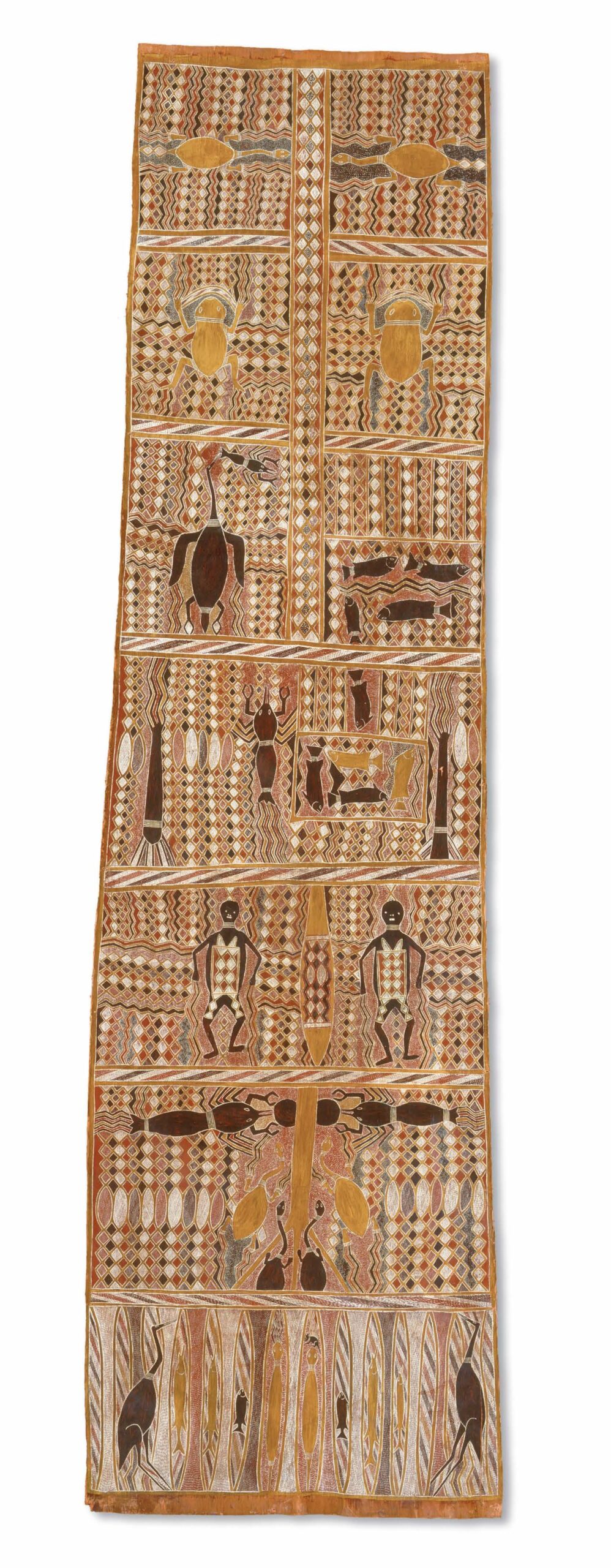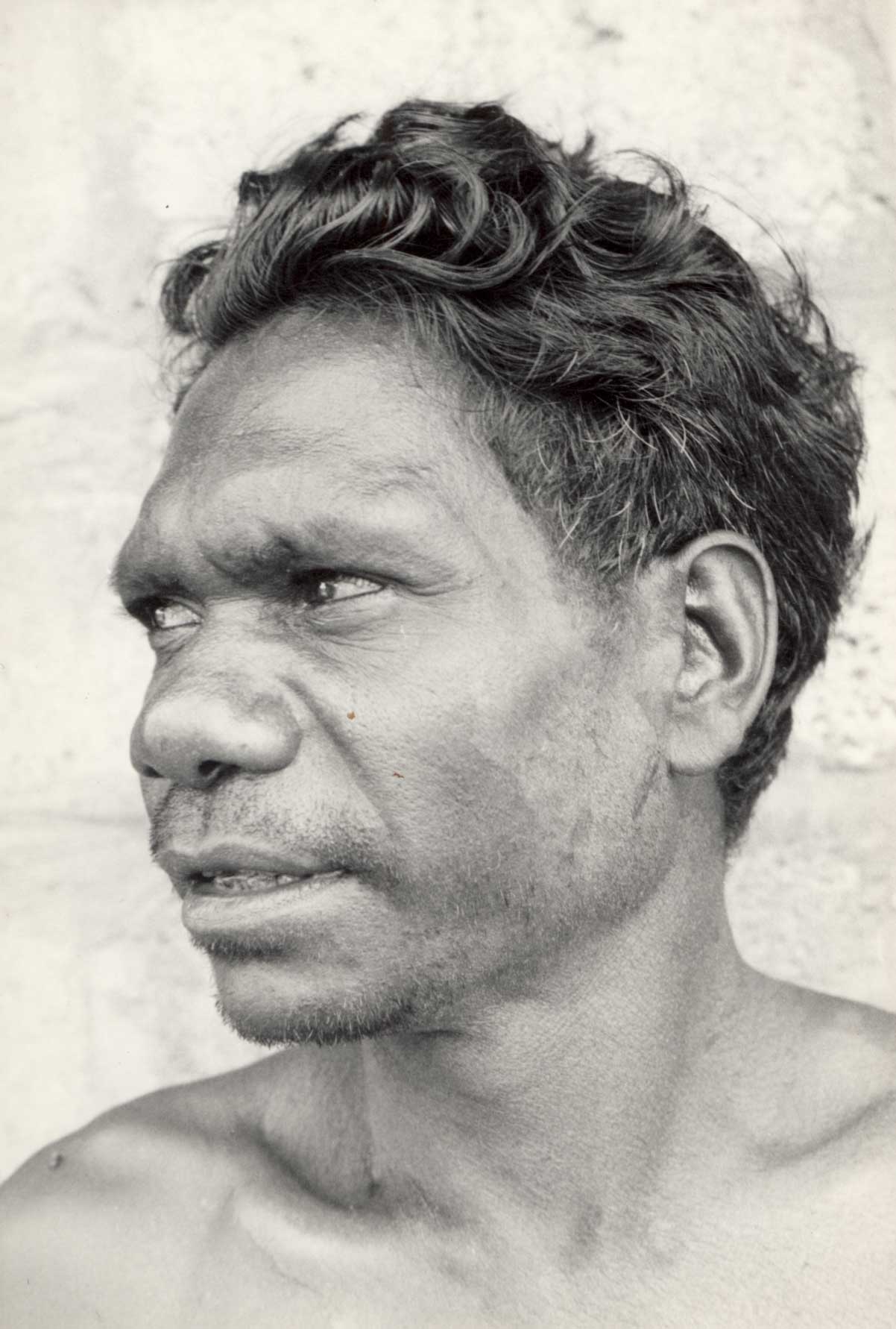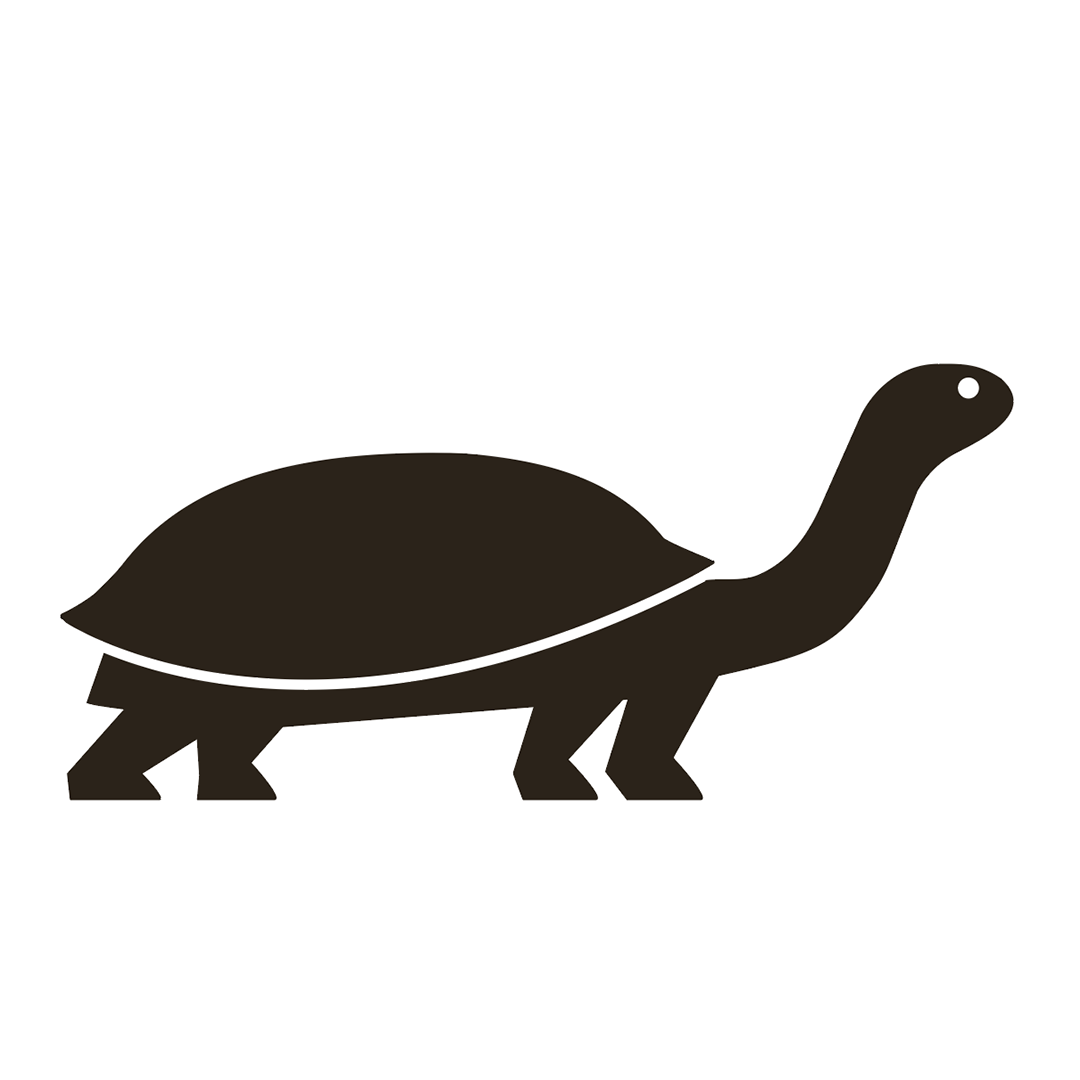
More Info
In late 1962, sixteen Yolŋu men came together to paint two large panels to be installed behind the altar of the new Methodist Church at Yirrkala. The Church Panels represented the most sig-nificant, communal expression of Yolŋu Law produced for public view. Yaŋgarriny Wunuŋmurra was a major contributor to the Yirritja panel. This painting was created shortly after the Church Panels were completed. It was one of the largest bark paintings produced to date, showing the ambition unleashed by this communal project and the desire to present Yolŋu Law to the world.
– Henry Skerritt and Kade McDonald
Additional Information
Decade
c.1963
Medium
Natural pigments on eucalyptus bark
Dimensions (IN)
108 ½ x 31 13/6
Dimensions (CM)
275.6 x 80.8
Credit
Art Gallery of New South Wales. Gift of Dr. Stuart Scougall 1964. IA1.1964.
Narrative
Dhaḻwaŋu
The Dhaḻwaŋu clan belongs to the Yirritja moiety. The most important Dhaḻwaŋu songlines relate to...
Songline
Barama and Lany’tjung
There were three ancestral beings: Barama, Lany’tjun and Galparrimun. Barama came from the place called...
Location
1960s
The 1960s were a decade of tumult and triumph for Yolŋu art and artists. In...
About The Artist(s)

Clan
Dhaḻwaŋu
Artist Dates
c.1932-2003
Alternative Names
Janggarin, Yangarin, Yanngarin, Yanngarinj
Yaŋgarriny Wunuŋmurra
Yaŋgarriny Wunuŋmurra was taught Law and ceremony by his märi (mother’s mother’s brother) Birrikitji Gumana. In 1983, he was the first Aboriginal Australian artist to have his copyright recognized in an Australian court after one of his designs was reproduced on a carpet without permission. In 1997, he was awarded first prize in the National Aboriginal and Torres Strait Islander Art Awards.

